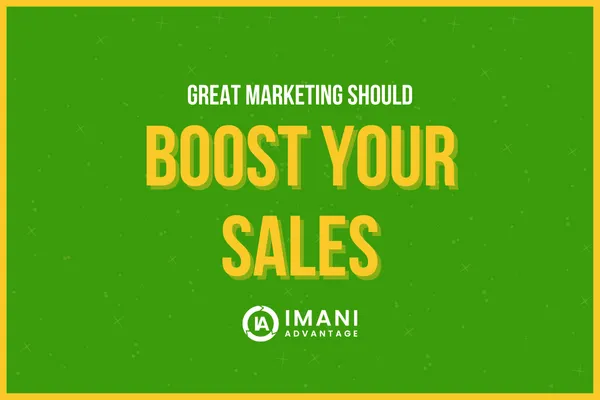
How can Marketing Boost your Sales Revenue?
Marketing is a Sales Machine
Marketing is a great tool in itself – it provides a creative side to all businesses and captivates consumers. A business taking on marketing initiative to its full potential is a business that will thrive. But because of this, it seems too instrumental a tool to simple use to make your business look pretty.
Of course, your business is looking to boost revenue and retain customers, and if you have marketing at your fingertips, you’re missing a trick when you don’t integrate it with your sales funnel. Ultimately, marketing is generating your sales - you just may not know it. Even marketing that’s set up to build brand awareness is creating a space in people’s minds that will inevitably lead to a sale if you continue to play that part. But how do you set up marketing to be the sales machine that you need? Marketing’s aim is to ensure your business is customer-centric. Lead generation is a highly sought-after marketing strategy. For one, people don’t want to be disrupted when there is no grounds to be. So we make sure that you’ve set up your marketing and sales team to reach out to prospects (people who have been engaging with your brand).
The Sales and Marketing Funnel
Your sales funnel consists of people in your pipeline who you have identified as either a prospect, lead, opportunity or sale. And your marketing funnel really isn’t much different; you start with a prospect, then you walk them through your journey to becoming fully qualified marketing leads, or MQLs for short.
When you’ve got your MQLs that you’ve identified through relevant marketing strategies and tools, you’re then able to see where they relate to your sales funnel.
Can you benefit your sales team with Marketing?
Yes, you really can. By converting prospects to customers, and monitoring the funnel they travel down, you can predict the sales results a lot more accurately. And that’s great for your team isn’t it? If they know the results they can expect, they can build focused goals, and scale according to the market interest.
Not only can your marketing team pass over really hot leads to your sales team, it also gets them talking to one another. Your two teams are joined by a mutual interest: fulfilling the business plan and increasing your sales revenue. Marketing will create a dynamic and reactive space for your business goals through marketing experimentation. But how can you start to piece this all together to create a well-created and dynamic team?
1. Define your goals
Rome wasn’t built in a day - and neither will your sales and marketing team alignment. To start off at the right pace, set up a brainstorming session for your team to define your goals. Once you have a heading, make sure that every team member is on the same course.
Marketers focus on brand salience and metrics such as engagement rates, while sales look for meeting quotas and problem solving to provide success measures. So you need to ensure that despite your teams’ differences, they can align themselves to a common goal that will benefit both teams, and ultimately, your business.
2. Define your Marketing and Sales Qualified Leads
Now you’ve got your common goals and you’re on an upwards path to success. But how do you define success along the way? How can you become proactive in changing up your plan if you need to take a different turn?
How marketing and sales quantify success is very different as we’ve expressed above, but the way they talk to one another doesn’t have to be.
I suppose the question we really want to answer is – how can we turn marketing efforts into quantifiable actions for the sales team? Marketing Qualified Leads (MQLs) and Sales Qualified Leads (SQLs) are the answer. An MQL is a contact who has expressed a certain interest in your brand. Based on their engagement with your marketing assets (landing pages, forms, webpage visits etc.) you can assess that they are more likely than others to be a customer. Once you’ve sent your MQLs to your sales team, they can then judge whether they are as engaged as you thought they were. If the sales team interact with these and the conversation is positive, we can now label these contacts as SQLs.
An SQL is a contact that has surpassed the marketing process fully engaged and is ready for the next step of the sales process. They’ve been qualified by sales and now they’re going to face a direct sales push.
Defining your MQLs and SQLs is really important to ensure that you’re fully confident in your marketing and sales processes. A poorly planned process may cause turbulence in your teams; sending over cold leads to your sales team could damage your customer relations as you’ll be running too fast. If the sales team have a negative experience with that MQL, they will be coming right back to marketing to adapt the qualification process. Equally, the same can be said if you produce highly qualified MQLs and your sales team isn’t fast enough in actioning them. if this is the case, you may need to evaluate if there is room to grow your sales team. For this to happen, you need to be consistence to provide that demand. Implementing pipeline stages can really boost your sales revenue. And your customer relations and the productivity of both your sales and marketing teams will thrive. Lead generation can be conducted with a number of tools – an integrated CMS will ensure all frontiers are analyzed and turned into quantifiable engagement.
